In recent years, fish farming has emerged as a lucrative industry in Kenya, opening up exciting opportunities for aspiring entrepreneurs and local communities. With its diverse water bodies, including lakes, rivers, and ponds, Kenya has an ideal aquaculture environment.
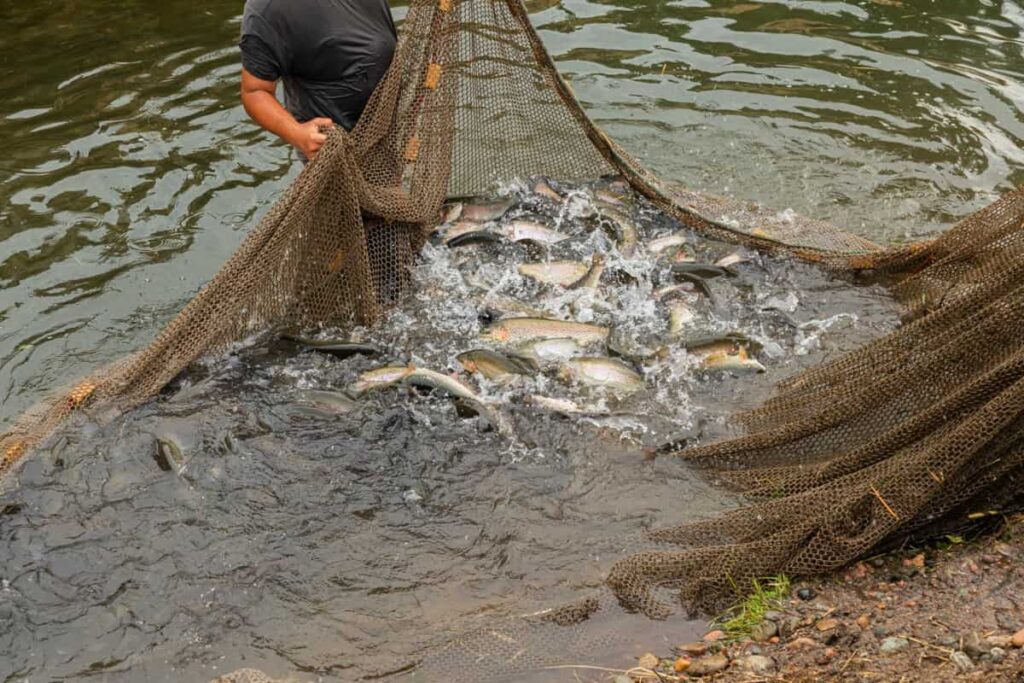
This blog post will explore the key rules to kickstart your fish farming venture from scratch, providing simple and easy-to-follow guidelines backed by accurate data. Whether you’re a beginner or looking to enhance your existing fish-farming operations, these insights will equip you with the knowledge to navigate Kenya’s thriving fish-farming industry with confidence and success.
Fish Farming in Kenya
Kenya is rich in aquatic resources, offering diverse climatic and geographic regions ideal for fish farming. Its water bodies, such as the Indian Ocean coastline, Lake Victoria, rivers, swamps, and wetlands, provide thriving habitats for native aquatic species. These environments range from marine and brackish waters to cold and warm freshwater, presenting sustainable opportunities for pond-based fish production. Fish farming in Kenya originated in the 1920s, initially focusing on tilapia species and later including common carp and African catfish.
The government’s “Eat More Fish” campaign in the 1960s led to a rapid expansion of tilapia farming, with numerous small ponds constructed, especially in the Central and Western Provinces. However, challenges in the 1970s, such as limited extension services, inadequate fingerlings, and insufficient worker training, resulted in a decline in production ponds. Until the mid-1990s, fish farming remained small-scale, subsistence-oriented, and low in production.
Recently, there has been a renewed interest in fish farming in Kenya. Renovation of government fish-rearing facilities, research programs on best practices, and comprehensive training for extension workers have reinvigorated the sector. Farmers nationwide are embracing fish farming to produce high-quality food for consumption and generate income. Farmers achieve higher yields and profitability by implementing appropriate techniques and management practices.
In case you missed it: Project Report of Pangasius Fish Farming: Cultivation Economics, Production Cost, and Profit Analysis
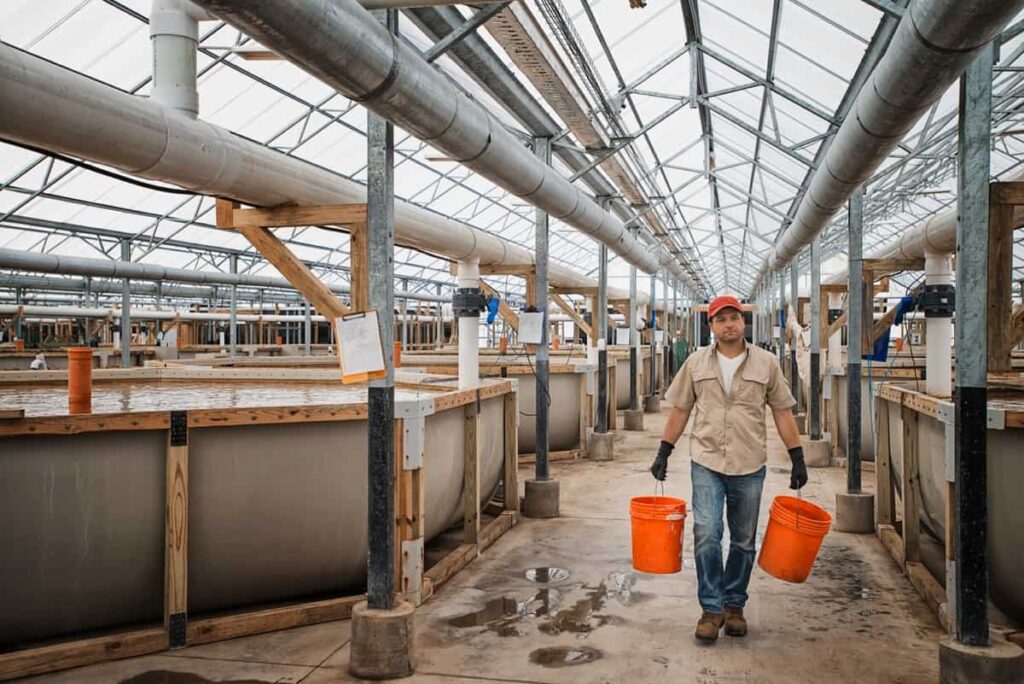
What are Potential Opportunities to Rise Fish and Aquaculture in Kenya?
The abundance of Natural Resources: Kenya has vast aquatic resources, including lakes, rivers, reservoirs, and a coastline, which can support a significant fish production capacity. Expanding the utilization of these resources through methods like cages, recirculating systems, and raceways can attract investment and improve distribution systems in East Africa.
Aquafeed Demand: Kenya imports a substantial amount of aquafeed annually, indicating a need for effective, affordable, and readily available fish feeds. Developing high-quality feeds for different stages of fish development can lead to increased fish production.
Fish Species Potential: Nile tilapia and African catfish are the main cultured species in Kenya, with high demand in local and regional markets. However, there is a need for tilapia fingerlings, highlighting the need for private investors to produce quality seed fish. Exploring alternative production methods and hybridization techniques can further enhance fish farming.
Diversification of Production: While pond-based aquaculture is common in Kenya, there is untapped potential in technologies like cage culture, recirculating systems, and tank fish farming. Investing in infrastructure, durable fish farming structures, and hatcheries can improve year-round production and support the growth of intensive production methods.
Mariculture Opportunities: The mariculture sector in Kenya, particularly along the coastal region, offers significant potential for growth. Milkfish farming has shown promising results, but other species, like mullet, still need to be explored. Addressing challenges related to suitable feed and exploring the culture of Artemia and other species can enhance mariculture development. Additionally, ventures such as oyster culture, silver pompano culture, mussel and abalone culture, and seaweed farming present untapped market opportunities in Kenya.
In case you missed it: Project Report of RAS Fish Farming: Production Economics, Cost, and Profit Analysis
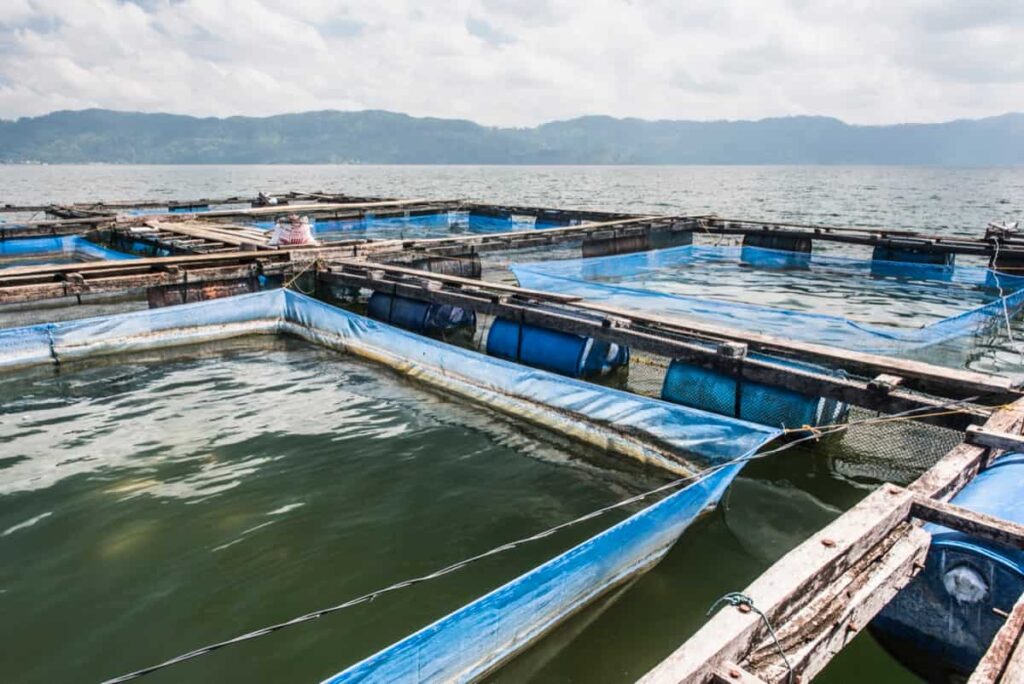
Benefits of Fish Farming in Kenya
- Income Generation: Fish farming provides a source of income for local communities.
- Local Development: It helps develop fish production and marketing systems locally.
- Livelihood and Food Supplements: Fish farming contributes to livelihoods and provides food supplements.
- Food Security: Various fish species contribute to food security in Kenya.
- Protein Source: Fish farming supplies valuable protein for human and livestock consumption.
- Affordable Protein: It offers a cost-effective protein alternative for farmers.
- Rural and Urban Practice: Fish farming can be practiced in rural and urban areas.
- Empowerment and Market Linkages: It provides income, employment, and market opportunities, especially for vulnerable households.
- Poverty Reduction: Fish farming contributes to poverty alleviation.
- Scalability: It can be done on small or large scales based on available capital.
- Food Economy: Fish farming supports the establishment of local food economies.
- Year-round Production: Fish can be grown throughout the year, ensuring a consistent supply.
How to Start Fish Farming in Kenya
- Conduct Research: Learn about suitable fish species, habitats, feeding habits, growth rates, and market demand.
- Choose a Suitable Location: Consider water availability, quality, land accessibility, and market proximity. Comply with local regulations.
- Construct the Fish Ponds: Select the type of pond based on your budget, space, and fish species. Ensure well-designed ponds with proper aeration and water circulation.
- Source Quality Fingerlings: Purchase healthy fingerlings from reputable hatcheries or suppliers.
- Water Management: Monitor water parameters regularly and implement filtration and aeration systems. Exchange or treat water as needed.
- Feeding and Nutrition: Consult experts to formulate appropriate feed or use commercial options. Adjust feeding rates and monitor fish growth.
- Disease Prevention and Management: Maintain water quality, monitor health, and implement biosecurity measures. Quarantine new stock and seek veterinary advice.
- Harvesting and Marketing: Plan harvesting carefully, explore markets, and establish buyer relationships. Consider value-added options like filleting or smoking.
In case you missed it: Project Report of Biofloc Fish Farming: Production Economics, Cost, and Profit Analysis
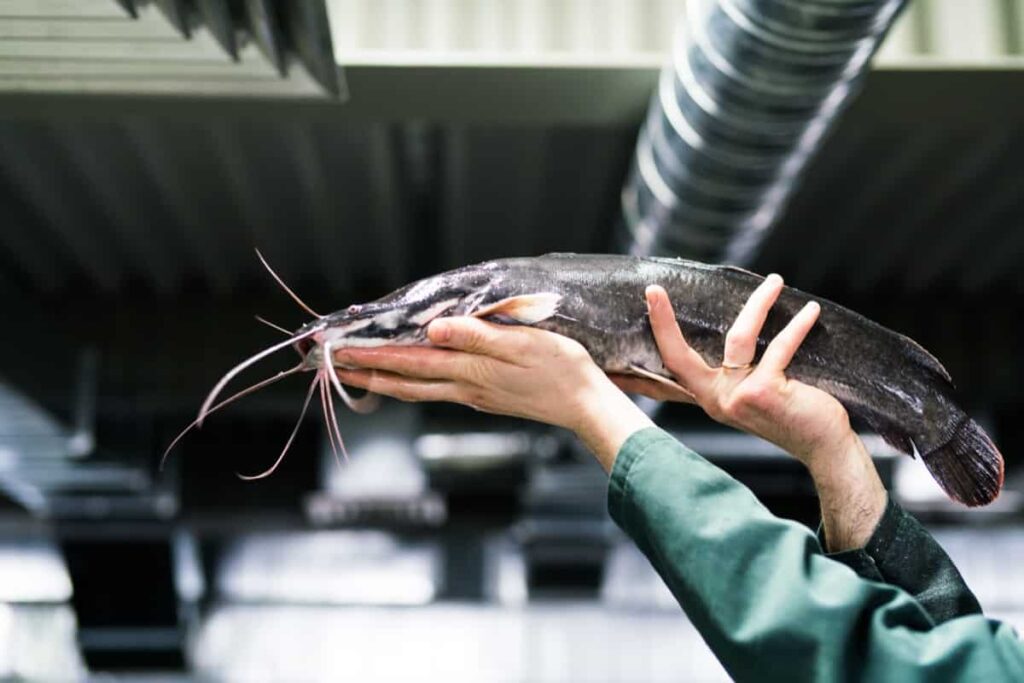
Fish Farming Planning in Kenya
- Land: The land should be level, large enough for present and future goals, and flood-resistant.
- Water: The water supply should be sufficient to maintain production through seasonal changes and fish growth. The water quality should also be good.
- Soil: The soil should be at least 1 meter deep and free of gravel or pebbles. It should also have a clay content of at least 20%.
- Market: The market demand for fish should be sufficient to justify production. The farm should also be close enough to the market to sell the fish easily.
- Infrastructure: The farm should have the infrastructure to support fish production and marketing. This includes things like roads, power, and telecommunications.
- Integration with Other Crops: Fish farming can be integrated with other crops to improve efficiency and profitability. This can be done by sharing inputs, byproducts, and labor.
- Legal Requirements: The farmer should know any legal requirements that may apply to fish farming in their area.
Pond Design and Construction for Fish Farming in Kenya
Water Sources: The water source must keep the pond full throughout the culture period. The quantity of water needed depends on the type of fish to be cultured and the size of the ponds. The water should be free of silt and clay, insect larvae, predators, unwanted fish species, pesticides and toxins, and excess fertility.
Bringing water to the Pond: The water can be brought by gravity flow or pumping. If gravity flow is used, the level of the drainage canal must be below the level of the pond bottom and at least 1.5 m below the level of the inlet canal. The level of the inlet canal must allow a slope of 1:1000 to secure a proper water flow.
Effects of Soil Types on Pond Design and Construction: The soil type must be suitable for fish pond construction. Sandy soils are too porous to hold water, while the clay is too compact and adsorptive, depriving the water of essential nutrient elements, particularly phosphorus. Soils with 20-35% clay are the best for building ponds.
Pond Size, Shape, and Depth: The size of the pond should be based on the pond’s purpose. Rectangular ponds are usually the easiest to build and manage. The ideal depth for most ponds ranges from 0.75 to 1.2 m. The shallow end can be 40 to 70 cm deep, while the deep end can be 80 to 120 cm deep.
The Slope of the Pond Bottom: The pond bottom must have a sufficient and best slope for good drainage. In general, slopes of 2 cm for every 10 meters along the pond bottom are appropriate.
Design of the Dykes: Height, Width, and Slope: The height of the dykes will be set by the depths you have chosen for the shallow and deep ends of the pond. However, dykes must be built higher than the full water level to guard against overflow. The additional height of the dyke above the full water level is called “freeboard.” Freeboards for ponds less than 1000 m2 should range between 20 and 30 cm. The width of the dykes should be at least 3 m at the top and wider at the base. The slope of the dykes should be 2:1 or 3:1, depending on the soil type.
In case you missed it: Fish Farm Operations Management: Month-wise Maintenance for Better Profits
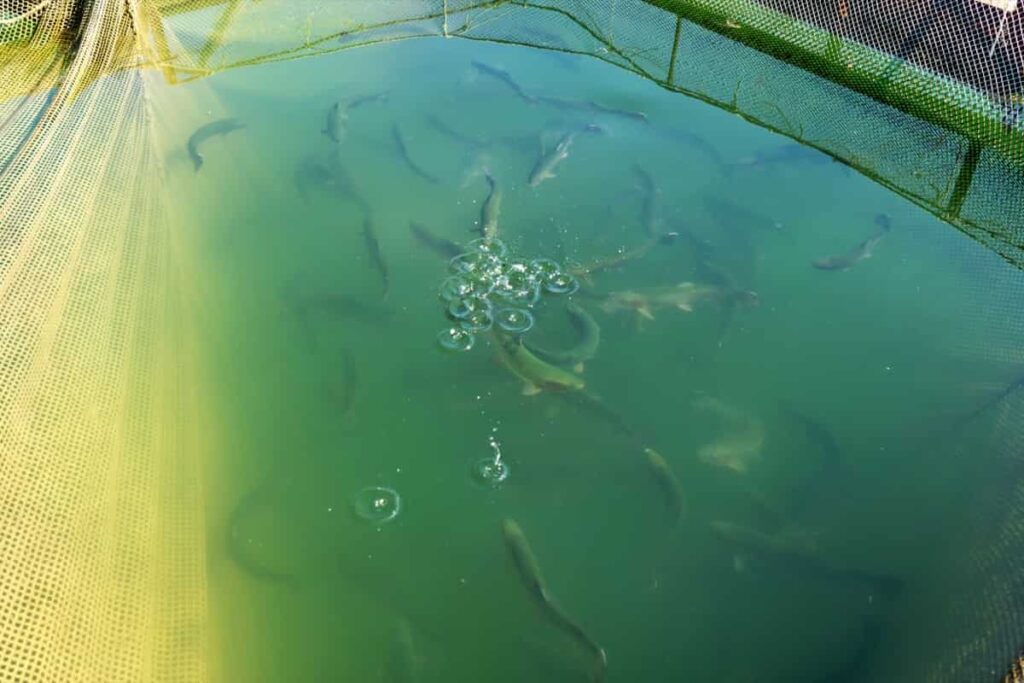
Pond Drainage Systems and Layouts are important for harvesting fish, eradicating predators, improving the bottom condition of the ponds, and raising production rates. The simplest drain is a standpipe protruding from the pond bottom. Monks are another type of drain that can be used in larger ponds. The layout of ponds should be logical and allow fish to move easily from one rearing phase to another.
Excavate the Pond: The pond should be rectangular or square, with a depth of 1-1.5 meters at the deepest point. The sides of the pond should have a slope of 1:2 or 1:3.
Build the Dikes: The dikes should be at least 0.5 meters high and 1 meter wide at the top. They should be made of compacted clay or soil.
Install the Inlet and Outlet Pipes: The inlet pipe should be located at the shallow end of the pond, and the outlet pipe should be located at the deepest end of the pond.
Fill the Pond with Water: The water should be clear and pollutant-free.
Species Selection Suitable for Culture in Kenya
Nile tilapia is a warm-water fish that is commonly cultured in Kenya. It can grow up to 500 g in eight months if breeding is controlled and the food supply is adequate. Juvenile tilapia feed on phytoplankton, zooplankton, and detritus, but adults feed almost exclusively on phytoplankton. Tilapia can reach maturity at two months or 10 cm or less in length. Hence, the major drawback of tilapia culture is its tendency to overbreed, which can result in a large population of stunted (undersized) fish.
Characteristics of Nile Tilapia
- Temperature tolerances: Nile tilapia can grow best in waters with a temperature range of 20-35°C. If temperature and pH remain favorable, they can survive dissolved oxygen (DO) below 2.3 mg/L.
- Maturation: Nile tilapia can mature at a size of 10 cm or less in length and two months of age.
- Feeding Habits: Nile tilapia are omnivorous, feeding lower on the food chain on phytoplankton, zooplankton, aquatic insects, and macrophytes.
- Breeding Behavior: Nile tilapia can spawn about once a month all year round if temperatures remain above 22°C.
- Husbandry Techniques: Nile tilapia are cultured in ponds using extensive, manured, or semi-intensive systems.
- Production of all-male Fingerlings: All-male populations of Nile tilapia can be produced by hormonal reversal.
- Tilapia Rearing Systems in Ponds: Nile tilapia can be reared in extensive, manured, or semi-intensive systems.
- Current Issues of Interest to Tilapia Farmers: Major management problems of pond-cultured tilapia include excessive reproduction and the subsequent stunting of fish due to overcrowding.
Fishpond Management Operations for Fish Farming in Kenya
- Pond Preparation: Before stocking fish, prepare the pond by removing any vegetation, debris, or predators. Repair or reinforce pond structures, ensure proper water supply and level the pond bottom for efficient water management.
- Stocking Fish: Select healthy fingerlings from reputable suppliers and introduce them into the pond. Consider the carrying capacity of the pond to avoid overcrowding, which can lead to poor growth and increased disease risks. Monitor the fish regularly to assess their health and growth.
- Feeding and Nutrition: A balanced diet promotes optimal growth and health. Consult with experts or nutritionists to formulate appropriate feeds based on fish species and growth stages. Monitor feed consumption, adjust feeding rates as needed, and ensure adequate water quality for efficient feed utilization.
- Water Quality Management: Regularly monitor water parameters such as temperature, dissolved oxygen, pH, and ammonia levels. Maintaining proper aeration and circulation systems ensures oxygen supply and prevents water stagnation. Periodically exchange or treat water if necessary to maintain suitable conditions for fish growth.
- Disease Prevention and Treatment: Implement biosecurity measures to minimize disease risks. Quarantine new fish stock before introducing them to existing ponds. Monitor fish health regularly, promptly identify any signs of diseases, and seek professional advice for diagnosis and treatment.
- Harvesting and Marketing: Plan the harvesting process carefully to minimize stress on fish. Use appropriate harvesting methods and equipment to maintain product quality. Explore various markets, including local fish markets, hotels, restaurants, and supermarkets. Build relationships with buyers and consider value-added options to increase market appeal.
- Record-Keeping and Documentation: Maintain accurate records of fish stocking, feeding, water quality parameters, and disease incidences. This information helps track the performance of the fish farm, identify areas for improvement, and comply with regulatory requirements.
In case you missed it: Sustainable Fish Farming: Zero Waste Fish Farming Practices
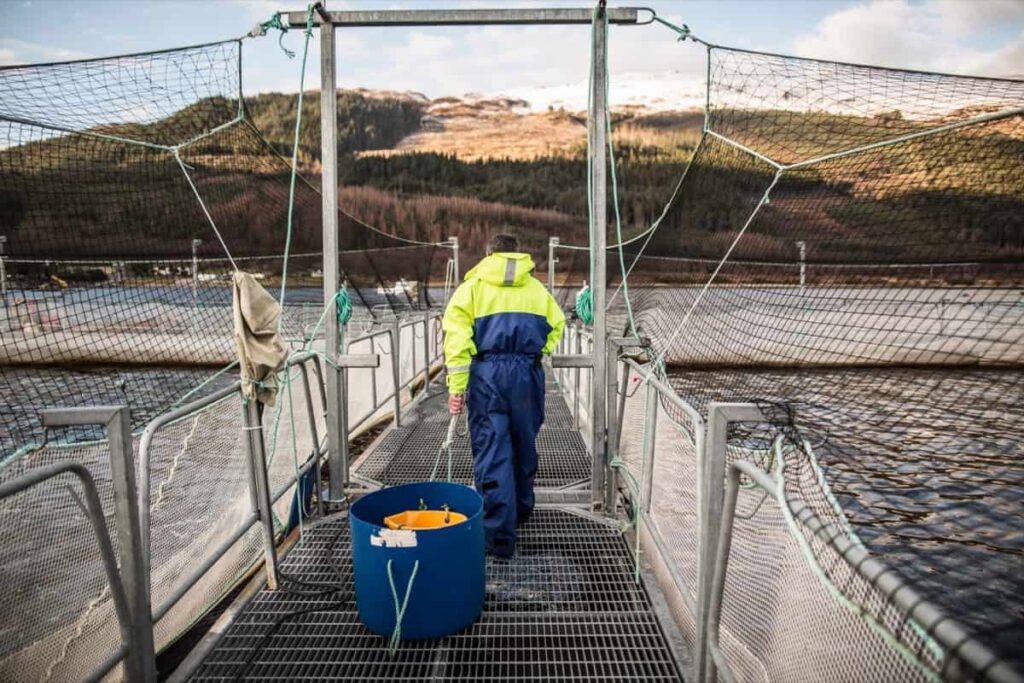
Conclusion
The rise of fish farming in Kenya offers promising sustainable food production and economic growth opportunities. To start from scratch, conduct thorough research, choose a suitable location, construct fish ponds, source quality fingerlings, manage water and nutrition, prevent diseases, and establish marketing channels.
- Management Pests and Diseases in Your Cotton Field
- Sheep Farming Business Plan for Beginners
- Aquaponic Farming at Home: A Step-By-Step Guide
- Profitable Village Farming Business Ideas in 2024
- High-Yield Aquaculture: Fast-Growing Fish for Farming
- Effective Fish Pond Construction Techniques for Beginners
- Irrigation and Water Management in Pineapple Farming
- Blossom to Harvest: Mastering Flowering and Pollination in Papaya Farming
- Pig Fattening Essentials: From Selection to Sale for Beginners
- Raising Wagyu Cattle: A Complete Guide for Premium Beef Production
- Soil Types and Their Water Holding Capacity
- Optimizing Irrigation Schedules for Coconut Groves for Enhanced Yield
- Espresso Your Garden: Coffee Grounds for Healthier Acid-Loving Plants
- The Best Soil Mix for Snake Plants: How to Mix Your Own Snake Plant Soil
- Green Thumb Success: Expert Tips for Cultivating Greenhouse Beans All Year Round
- Bloom All Year Round: The Ultimate Guide to Indoor Hyacinth Care
- Eco-Friendly Gardening: How to Make Liquid Fertilizer from Kitchen Waste
- Ultimate Guide to Grow Anise in Pots: Explore Seed Propagation to Harvesting
- Guide to Raising Chester White Pigs: Discover Breed Facts to Growth Management
- Mastering the Elegance: The Ultimate Guide to Weeping Cherry Tree Care, Planting, and Maintenance
- Ultimate Guide to Planting Garlic in Grow Bags: Growing Strategies for Beginners
- How to Fix Spider Plant Leaf-Related Problems: Natural and Organic Remedies
- 10 Reasons Why Your Tulsi Plant is Shedding Leaves: Home Remedies and Solutions
- Optimizing Growth and Yield: The Advantages of Palm Bunch Ash Fertilizer
- Utilizing Neem Oil Extract as a Natural Pesticide for Hydrangea
- From Soil to Harvest: Various Ways in Which Farmers Can Use AI Tools
- Steps to Encourage and Induce Citrus Flowers: A Comprehensive Guide
- How to Fix Snake Plant Leaf-Related Issues: Natural and Organic Remedies
- Transform Your Garden into a Fragrant Oasis with Raat Ki Rani (Night Blooming Jasmine)
- Discover the Ideal Chicken Breeds for Philippine Farms
- How to Create a Poultry Egg Farm Business Plan for Profits
- Grow Lemon Cucumbers Like a Pro: Insider Techniques for Bountiful Yields
- Ultimate Guide to Caring for Your Pink Princess Philodendron: Tips for Thriving Variegation
- Areca Nut Profit Per Acre: Calculating Yield and Cost of Cultivation
- How Kaveri Chicken is Becoming a More Profitable Breed in Indian Backyards
- Transform Your Barn: 9 Steps to Convert a Horse Stall into a Chicken Coop
